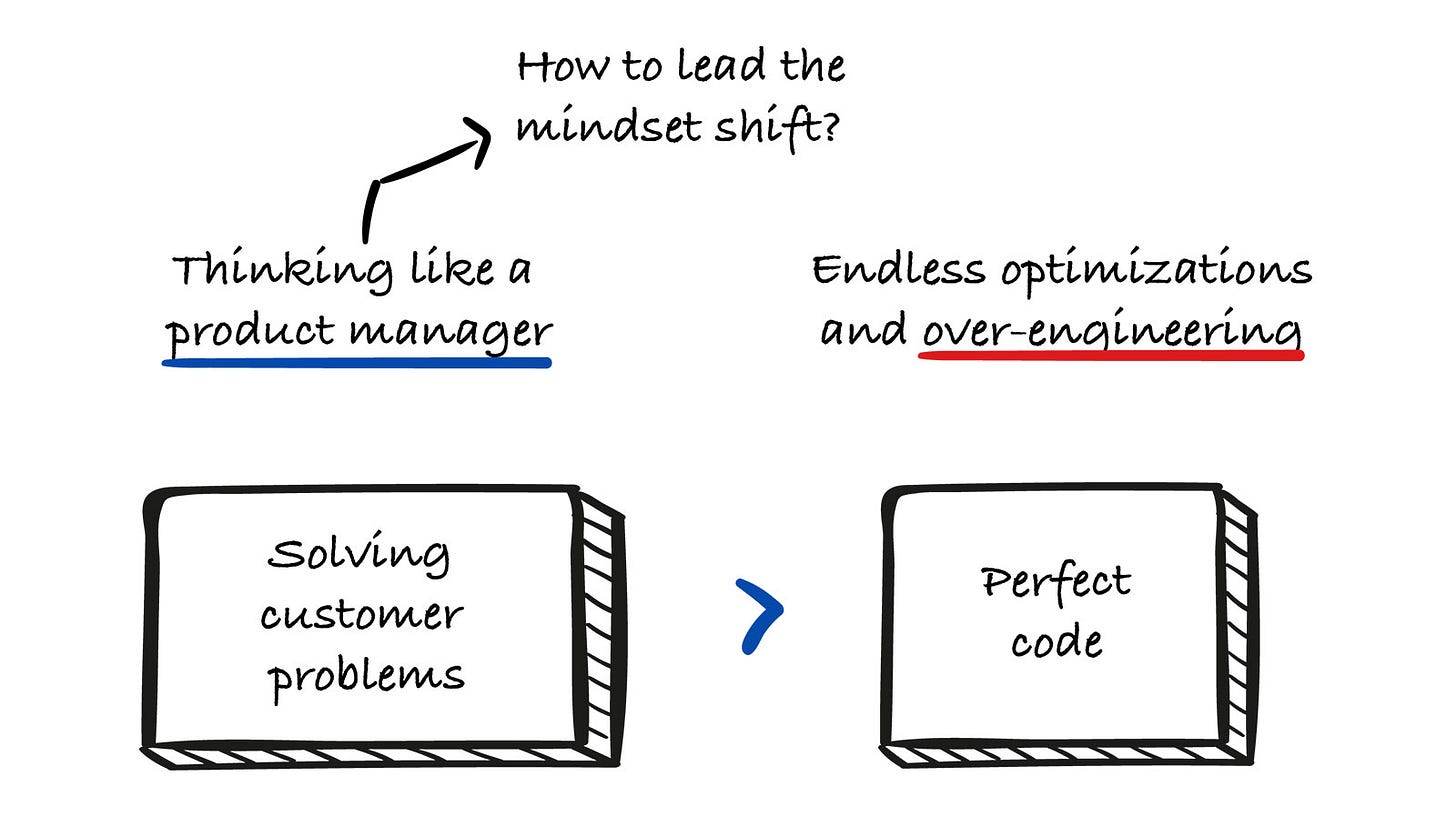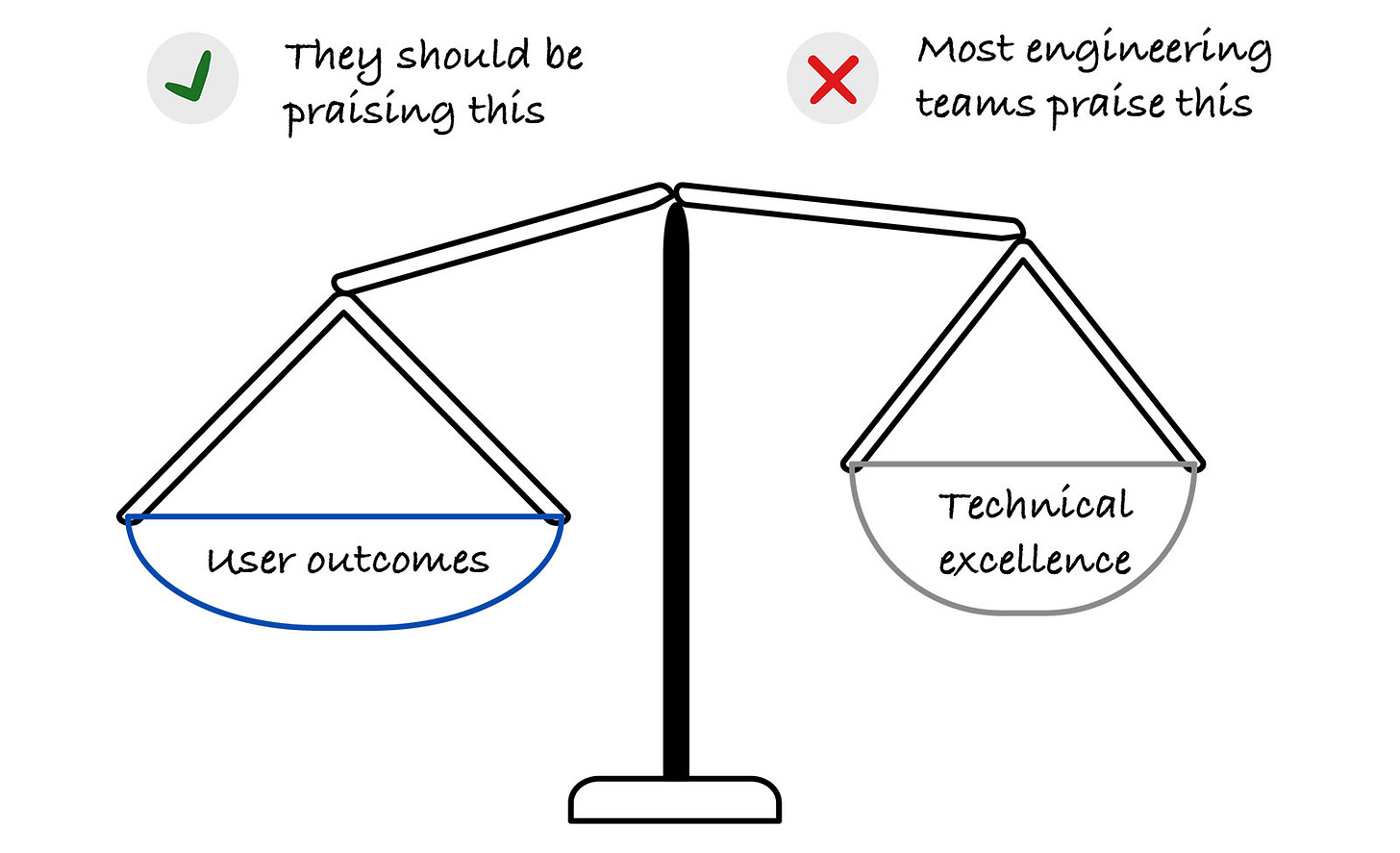Your Engineering Team Should be Looking to Solve Customer Problems
Build the RIGHT things first. Secondly, build the things RIGHT!
Intro
Too many engineers are thinking code-first. But engineers who deliver real value think like a product manager.
Not just focusing on the technical solution, but focusing on delighting the customers.
At the end of the day, it’s not about how great a technical solution is, it’s all about what impact it has on the business and the customers.
As an engineering leader, how can you lead the mindset shift within your engineering team and also the overall organization?
Lucky for us, we have Matt Watson with us today, who is sharing his insights on this topic and how to lead the shift in today’s article.
Introducing Matt Watson
Matt Watson has more than 20 years of experience as a founder and CTO, he built and scaled multiple tech companies, including bootstrapping VinSolutions to $35M ARR before its $150M acquisition. Today, he is leading Full Scale, a company with over 300 employees.
I've known Matt for 2+ years now and he’s been one of the people who helped me a lot with advice and insights when I first started with the newsletter!
Matt has recently published a book called Product Driven and he's been kind enough to share one of the sections with us today, adapted as part of this article.
You can get the free kindle version of the book here only today and tomorrow.
Your Engineering Team is Always Looking Somewhere
The only question is: where are you leading them to look?
Are they paying attention to what’s on the sprint board or what’s happening in the customer’s world? Are they focused on pushing code or solving problems?
This choice has always mattered. But right now, it matters more than ever.
AI is accelerating everything-product cycles, expectations, and decision loops. Leadership is under more pressure to move fast.
But it's not enough to just move quickly. Teams have to deliver value fast. And that requires clarity about what matters to the customer → not just what’s in the sprint backlog.
This is the leadership challenge most engineering leaders miss: You don’t just set the priorities. You set the direction.
As a leader, where your team looks is where your product goes.
The Pull Toward Code is Strong
When I was an engineer, solving hard technical problems was addictive. I could get lost in architecture decisions, database optimizations, elegant abstractions. It felt like progress. And sometimes, it was.
But more often than I care to admit, I spent hours perfecting things that never created value for the customer. That’s the trap. We fall in love with the challenge itself → getting the architecture right, solving edge cases, refining the flow.
It’s satisfying work, but without the user in mind, it often becomes aimless. It’s not wrong. It’s just incomplete.
The system trains us this way. Most engineering performance reviews praise clean commits, not customer impact. Most processes reward sprint completion, not user outcomes. And most cultures treat technical exploration as progress, regardless of whether it solves a real problem.
I once had an engineer tell a customer, "It’s all documented." Technically, he was right. But the customer couldn’t figure it out, and didn’t care how elegant our docs were. They just wanted their problem solved. That engineer wasn’t lazy or unhelpful. He was doing what we’d trained him to do: protect the code, not understand the customer.
Engineers don’t drift inward because they’re misaligned. They’re often deeply motivated, just by the wrong signals. Code gives instant feedback. The logic is clean. But that’s also what makes it easy to lose weeks solving the wrong problem.
We don’t default inward because we’re bad at product thinking. We default inward because it’s safe, measurable, and rewarded. But it’s also how we lose focus.
The Cost of Focusing Too Much on the Code
I’ll never forget the time we launched a big feature at Stackify. Everything went perfectly. No errors. No incidents. Deployed on time. And then… silence. No feedback. No impact. No one even noticed.
That silence should have scared us more than any bug report ever could. We’d built something we thought users needed. But we hadn’t checked. We hadn’t watched them struggle, listened to their problems, or tested our assumptions. We built it because we could.
And when teams operate in that same pattern over time, the symptoms get worse. Output increases. But outcomes stall. Burnout rises. Engineers start to disconnect. It becomes easier to hide inside the system, to retreat into the backlog or cling to completion metrics. But it’s harder to feel proud of the work.
We confused shipping with success. And that’s a pattern I’ve seen at every level of engineering. Fast teams who deliver constantly, but don’t learn. Burned-out engineers asking, "Why are we even building this?" Roadmaps full of features that sound good on paper but solve nothing in the real world.
At some point, your team stops caring about the impact. They go heads down. They focus on the requirements and stop asking questions. This isn’t just burnout from pressure. It’s what happens when teams lose sight of the customer. They start perfecting the system instead.







